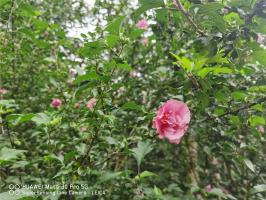What allowed spore-bearing plants to become tree-like
Spore-bearing plants are some of the oldest and most successful types of plants on Earth. Today, they can be found all over the world, from the tropics to the polar regions, and they come in a variety of forms, from mosses to ferns. However, some of these plants have evolved to become tall and tree-like, dominating their ecosystems and shaping the landscapes they inhabit. So what allowed spore-bearing plants to become tree-like, and what advantages did this form give them?
The advantages of being tall
One of the main advantages of being tall for a plant is the ability to capture more light. By growing above other vegetation, tall plants can intercept more sunlight and convert it into energy through photosynthesis. This is especially important in densely packed forests or other competing environments, where the competition for light can be intense. By growing tall, spore-bearing plants could outcompete their neighbors and dominate the landscape.
Evolutionary adaptations
Of course, growing tall is not enough on its own. To become tree-like, spore-bearing plants had to adapt in other ways as well. One important adaptation was the development of woody tissue to support their stems and branches. This allowed them to grow taller and wider, and to spread their branches out to capture even more light. Another adaptation was the development of roots that could anchor the plant firmly in the ground and extract nutrients and water from deeper soil layers. By growing taller and wider, and developing stronger support structures, spore-bearing plants were able to evolve into the massive trees we know today.
The advantages of spore-based reproduction
Another key advantage that allowed spore-bearing plants to become tree-like was their mode of reproduction. Spore-based reproduction is highly effective and adaptable, allowing plants to spread their genes over large distances and colonize new environments. Unlike seed-based reproduction, which is restricted to relatively short distances, spores can be carried far and wide by wind or water, allowing plants to reach new habitats and colonize new ecosystems. This made it possible for spore-bearing plants to expand their range and diversify into a wider variety of ecological niches, including the highly competitive forest environment.
The importance of symbiosis
Finally, spore-bearing plants have benefited greatly from symbiotic relationships with other organisms, such as fungi and bacteria. Fungi, for example, can form mutually beneficial partnerships with plants, helping them extract nutrients from the soil and protecting them from disease. By forming symbiotic relationships with other organisms, spore-bearing plants were able to thrive in harsh and competitive environments, and to evolve into the dominant trees that we see today.
Conclusion
Spore-bearing plants have been around for millions of years, and over that time they have evolved into a wide range of forms, from mosses to towering trees. However, becoming tree-like was a major evolutionary step that required a combination of adaptations, including woody tissue, robust roots, spore-based reproduction, and symbiosis with other organisms. By developing these traits, spore-bearing plants were able to dominate their ecosystems, shaping the landscapes and biospheres we see today.

 how many times do yo...
how many times do yo... how many planted tre...
how many planted tre... how many pine trees ...
how many pine trees ... how many pecan trees...
how many pecan trees... how many plants comp...
how many plants comp... how many plants can ...
how many plants can ... how many plants and ...
how many plants and ... how many pepper plan...
how many pepper plan...






























